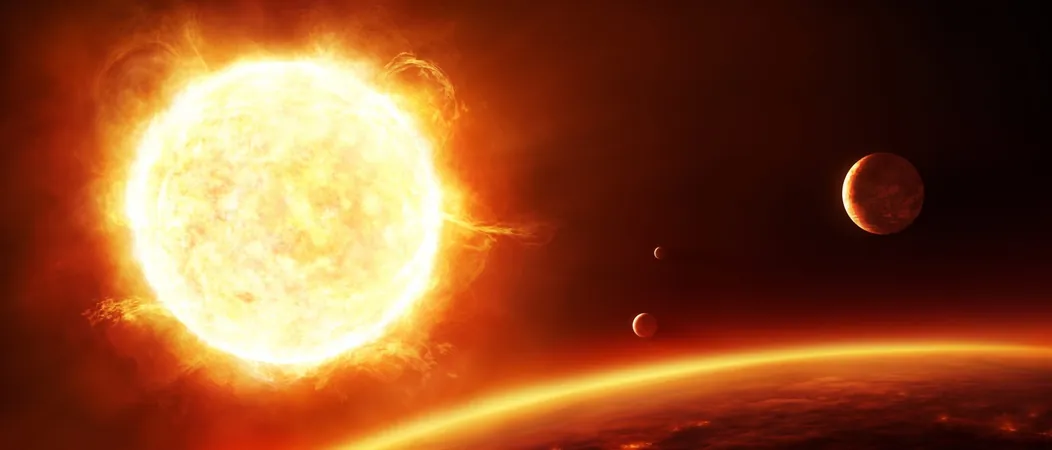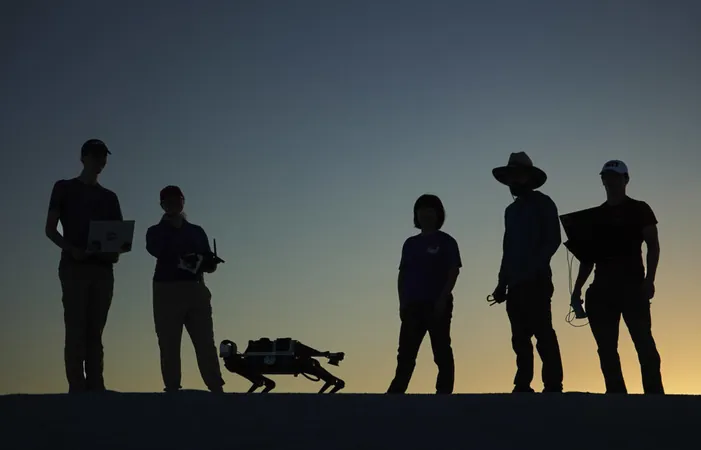
Parker Solar Probe Unveils Groundbreaking Evidence of Magnetic Reconnection on the Sun
2025-08-20
Author: Wei
NASA's Game-Changing Discovery!
NASA’s Parker Solar Probe (PSP), under the guidance of scientists at the Southwest Research Institute (SwRI), has made a monumental discovery: the first compelling evidence of magnetic reconnection in the upper atmosphere of the Sun! This groundbreaking finding confirms long-standing theories that have shaped solar science for nearly seven decades.
Unraveling Solar Explosions: The Mechanics of Magnetic Reconnection
Magnetic reconnection occurs when magnetic field lines in plasma are broken and reconfigured, releasing massive amounts of energy. This process fuels explosive solar phenomena, including solar flares and coronal mass ejections (CMEs), which can disrupt satellites, communication networks, and power grids on Earth. Although reconnection has been noted near Earth through missions like NASA's Magnetospheric Multiscale (MMS), direct evidence in the solar corona was previously elusive.
A Historic Encounter
On September 6, 2022, the Parker Solar Probe achieved an unprecedented approach to the Sun, venturing into regions of the corona that no spacecraft had ever explored. During this record-breaking encounter, PSP flew through a significant solar eruption, gathering vital data on plasma and magnetic fields. Remarkably, it passed directly through a magnetic reconnection site in the Sun’s upper atmosphere.
Revolutionizing Our Understanding
This is the first instance where scientists have sampled a reconnection event in the solar corona at such close range. These findings were bolstered by simultaneous observations from the European Space Agency’s Solar Orbiter, enabling a thorough analysis. The data collected matched predictions made by numerical models of magnetic reconnection established since the mid-20th century, marking a breakthrough in validating theoretical frameworks.
Bridging Gaps in Knowledge
The new insights from the Parker Solar Probe help bridge the gap in understanding how magnetic reconnection operates across various environments—from Earth’s magnetosphere to the Sun’s dynamic atmosphere. The research illuminates how energy transfers and propels particles during explosive solar events.
Predicting Space Weather Like Never Before
The team at SwRI is now delving deeper, exploring whether turbulence, magnetic fluctuations, or wave activity are linked to reconnection in the areas studied by PSP. These investigations could unlock how energy accumulates and is unleashed in the solar atmosphere.
With an increasing reliance on technology susceptible to space weather, understanding magnetic reconnection is vital. These new revelations may lead to more accurate predictions of solar storms and their impacts on Earth, ensuring better protection for satellites, astronauts, and critical infrastructure.
A Mission Built for Discovery
Launched in 2018 as part of NASA’s Living with a Star program, the Parker Solar Probe was specifically designed to investigate solar phenomena affecting the Sun-Earth system. Managed by NASA’s Goddard Space Flight Center and operated by the Johns Hopkins Applied Physics Laboratory, this pioneering spacecraft continues to contribute to the field of heliophysics, paving the way for advancements in our understanding of the solar dynamics.




 Brasil (PT)
Brasil (PT)
 Canada (EN)
Canada (EN)
 Chile (ES)
Chile (ES)
 Česko (CS)
Česko (CS)
 대한민국 (KO)
대한민국 (KO)
 España (ES)
España (ES)
 France (FR)
France (FR)
 Hong Kong (EN)
Hong Kong (EN)
 Italia (IT)
Italia (IT)
 日本 (JA)
日本 (JA)
 Magyarország (HU)
Magyarország (HU)
 Norge (NO)
Norge (NO)
 Polska (PL)
Polska (PL)
 Schweiz (DE)
Schweiz (DE)
 Singapore (EN)
Singapore (EN)
 Sverige (SV)
Sverige (SV)
 Suomi (FI)
Suomi (FI)
 Türkiye (TR)
Türkiye (TR)
 الإمارات العربية المتحدة (AR)
الإمارات العربية المتحدة (AR)